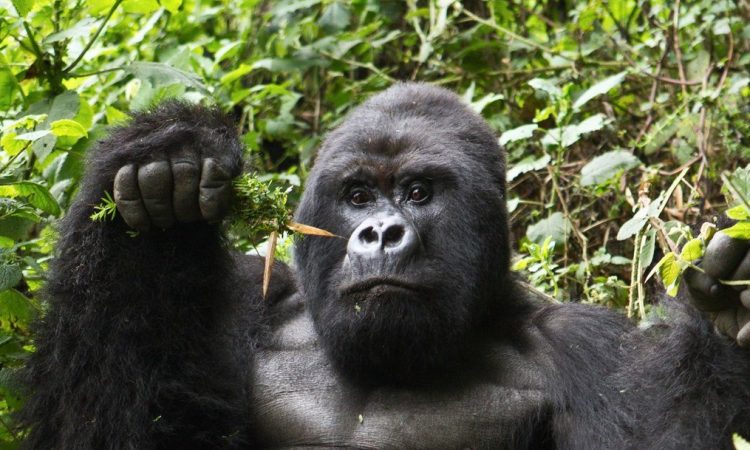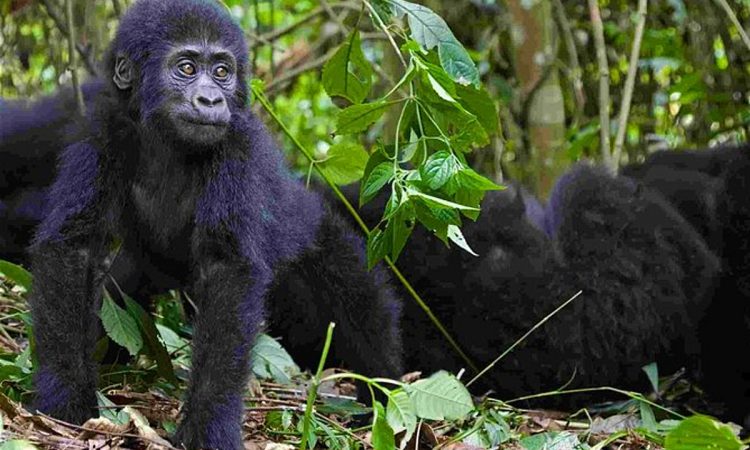Why Is Gorilla Trekking Important in Uganda, Rwanda and Congo: For many visitors, seeing the animals in the wild and getting up close to them is the most thrilling and unforgettable part of their African safari. Encounters with the endangered mountain gorillas of central Africa are among the most sought-after experiences, with many people putting them at the top of their bucket lists.

However, when it comes to animal encounters (getting up close and personal with animals) and interactions (touching, strolling with, or riding animals), numerous crucial, often contentious, ethical issues eventually arise.
Many of the non-profits and enterprises that provide these “wild” activities promote their animal adventures as helpful to the species involved and to wildlife conservation in general. Unfortunately, animal interactions are typically not helpful for the animals or for conservation.
Safari-goers may participate in fascinating wildlife-related activities at their leisure, which means that by being aware, you can be selective and boycott problematic operations and detrimental activities.
Although programs in which animals are housed and reared in confinement are the most heavily scrutinized, it is also worth considering if tourist operations with free-roaming wild animals are morally sound. This takes me to my example: going gorilla trekking in Central Africa to observe the critically endangered African Mountain Gorillas.
Why is gorilla trekking important in Uganda, Rwanda and Congo?
Because gorillas are severely endangered, it is vital to question the influence of gorilla trekking on their conservation. According to the World Wildlife Fund, there are only 880 individual mountain gorillas left in the world today.
Given that mountain gorillas in Uganda, Rwanda and Congo have few natural predators and that humans are the primary force driving this species to extinction, we must ask ourselves whether going gorilla trekking will endanger the survival of this incredibly vulnerable species or help save it.
Is tourism aiding gorilla conservation in Uganda, Rwanda, and the Democratic Republic of the Congo? The key risks to the surviving wild gorilla populations must be evaluated in order to unravel the possible negative effects of gorilla trekking.
What are the threats to Mountain Gorillas in Uganda, Rwanda and Congo?
- Loss of habitat (deforestation)
- Poaching
- Human disease transmission
- Civil war and political instability are examples of human conflict.
- Bush meat and trophy hunting
- Conflict between humans and wild animals
The spread of communicable illnesses is the greatest serious threat to mountain gorillas in Africa, and it is aggravated by gorilla trekking. Trekking has the greatest potential for harm by increasing the risks of spreading human illnesses to mountain gorillas by exposing them to more people more regularly.

Because gorillas and humans share 98.5% of the same DNA, these primates are extremely vulnerable to human-borne infectious illnesses. Because these infectious illnesses are easily transferred from humans to gorillas, more interaction with these primates poses greater health concerns (for the gorillas).
Diarrhea, scabies, and TB are among the human illnesses harming gorilla populations. Gorillas do not have the same immune systems as humans, making them vulnerable to our illnesses.
According to Dr. Gladys Kalema-Zikusoka, one of Africa’s foremost biologists and environmentalists, two gorillas in Rwanda have been sick and died as a result of interaction with visitors in the past.
To mitigate the hazards of bringing humans into touch with wild gorillas, national park officials accompany tourists to guarantee that all restrictions are properly followed. An official permission is necessary to go gorilla trekking in the rainforests that cross the borders of Uganda, Rwanda, and the Democratic Republic of the Congo, which is closely managed to limit the danger of passing avoidable diseases to the gorillas. Gorilla trekking is a well-regulated, tightly supervised activity – a wild adventure, but not one to be taken lightly.
Gorilla trekking requires expensive permits in Volcanoes National Park in Rwanda, Virunga National Park in Congo, and Bwindi Impenetrable National Park in Uganda, which must be obtained in advance. A restricted number of trekking permits are provided in order to control the number and size of tourist groups that visit the gorillas each day.
The rules are similar in the four national parks of the three nations where trekking takes place. Before departing with qualified rangers and their helpers, who aid trekkers in maintaining proper gorilla trekking etiquette, park officials lecture guests on the restrictions.
Visitors are also kept updated by the tour companies and lodges that assist tourists in booking treks, obtaining permits, and traveling to and from ranger stations. The most essential guideline is to keep a distance of 7 to 10 meters from the gorillas, which helps to reduce contact and hence the spread of infections. The difficulty with this regulation is that gorillas occasionally approach people, getting far closer than is safe.
If a gorilla approaches you, keep put, make no abrupt moves, and avert your gaze to avoid looking combative. This implies that gorillas and humans are getting closer than the safe distance necessary, which is one of the reasons why hiking with surgical masks on is strongly advised, even in locations where masks are not required.
Only eight persons are permitted to trek at a time, with up to three groups tracking in a day. If you sneeze or cough, you must cover your mouth and turn away from the gorillas; this is another instance where wearing masks increases safety and is thus a reasonable measure to safeguard the primates.
The gorilla trekking tourism sector has a generally favorable influence on the people surrounding the national parks. Tourism contributes to community upliftment in impoverished regions by providing jobs and economic advantages that have a favorable impact on gorilla conservation. Local people’s relationships with great apes are changing as they profit from gorilla tourism and learn more about these endangered species.
Human-wildlife conflict is decreased when individuals have a greater understanding of gorillas and a keen interest in the species’ survival. The gorillas are increasingly viewed as revenue-generating resources with long-term tourism appeal.
The increase in local investments, both economic and social, gives incentive to safeguard the gorillas so that the benefits of education, health care, and economic stimulation may continue.
Previously regarded as rivals for habitat, unfortunate deaths in hunting traps, sources of food, hunting trophies, and targets for unsustainable financial infusions from poaching, gorillas are currently being protected as a consequence of tourism and allied social and scientific efforts.
In some cases, poachers have become game rangers, working on anti-poaching patrols that are critical to the survival of the gorillas.
In Rwanda, 10% of the revenue generated by gorilla trekking tourism is directed toward community projects in the Volcanoes National Park, reinforcing the positive effects of gorilla trekking and making conservation of these gentle primates meaningful to rural communities in concrete and practical ways.
To summarize, while gorilla trekking in Africa increases the danger of exposing gorilla populations to human pathogens, the tourist business does not harm overall gorilla conservation. However, in order for the advantages of tourism to continue to exceed the drawbacks, gorilla trekking must be controlled efficiently and cautiously.


